Turn & Smile Prime Time May 29th - Good American Family; Wear Whatever The F You Want; Asterix & Obelix!
As George Michael once sang: 🎶 FREEDOM!! 🎶
Welcome back, Sofa Taters!
🎶 Freedom (I won't let you down) Freedom (I will not give you up) Freedom (Gotta have some faith in the sound) 🎶
Hello again, Sofa Taters! This week, we picked a few shows that, in a certain light, if you squint, seem to be about freedom.
Good American Family is about a little girl’s journey to be free from an abusive family and system.
Wear Whatever the F You Want is about the freedom to make your own personal style fashionable and chic.
And Astérix & Obélix: The Big Fight is literally about fighting for freedom against an invading army (but also friendship and respect).
Table Of Contents
OPENING: Good American Family
Summary
Good American Family is based on the true story of Natalyah Grace Renee Mans, a Ukrainian orphan with a rare form of dwarfism, adopted by American parents who, before Natalyah was ten years old, erroneously accused her of being an adult and abandoned her. The opening sequence is framed as a child’s craft project, with various cutouts of people and objects displayed as if made on craft paper. The scenes in the opening sequence themselves showcase imagery related to child adoption and medical procedures, hinting at eventual abandonment. The last scene shows a child’s hand cutting the frame with scissors, showcasing the metaphor that the events in the show will cut through the family.
Sound 🌟🌟🌟
Larissa’s take: Everything about this opening plays on the juxtaposition of youthful naivety with unsettling, even scary situations - doctor’s results, relocation, and even abandonment. The sound here gives the same effect. It features a simple piano melody reminiscent of a nursery rhyme or lullaby. The sound also bears a resemblance to Severance, as both feature a simple melody in a minor key, which makes them feel unsettling. If this were a major key, the melody would probably come off as more of a typical lullaby, making the scenes of houses and families feel safe instead of sinister, and the scenes showcasing medical and legal documents feel righteous and worthy. The sound allows for the title, Good American Family, to feel a bit ominous.
Mason’s take: I might be biased, or just not a trained expert in music, or both, but this opening sounds how I would expect it to sound. It’s an instrumental in a minor key that hints at creepy without being creepy. It tries to draw the viewer in and probably does an adequate job of that, but on that front, my personal bias is closing me off.
Conveyance (of Tone/Theme) 🌟🌟🌟🌟🌟
Mason’s take: It certainly sounds like a mystery is afoot, judging by this opening. The minor tones certainly help in that respect. Unfortunately, though it’s trying to prop itself up as a mystery where the viewer doesn’t know who’s telling the truth. Personally, I can’t get over the things I already know about the real story. It’s an unsettling story about child abuse, gaslighting, manipulation, misuse of the courts, and abandonment, so the opening sequence already planting the suggestion that the parents might be in the right is disturbing to me. The rest of the opening’s imagery seems to me to convey the sense of not fully holding things together or being moments from some sort of collapse.
Larissa’s Take: I was only peripherally aware of this case before this show. While it doesn’t necessarily hint at any potential neglect and abuse, the opening sequence does frame the general plot well. It shows a family going through the process of adoption, and things going awry in a big way. It does read very 2009’s Orphan, which may have been done on purpose. From watching the opening sequence, the audience is made to believe that the horrible events that are about to unfold could be caused by a sociopathic adult child-impersonator, versus the potentially more sinister real-life story of a family abandoning a 10-year-old in an apartment and moving to a different country. The true story seems stranger than fiction, and this opening sequence does a great job of delivering that sinister vibe.
Aesthetic 🌟🌟🌟
Mason’s take: It seems a little sanitized. I feel like it has the vibe of a medical mystery. Like this sequence with superimposed footage of Omar Epps in a lab coat or Hugh Laurie with two days of stubble over some of the transitions, and it honestly would look like it fits to me.
Larissa’s take: I am into this aesthetic. I think the choice of making it look like a display project made out of craft paper was a smart choice, because it makes it feel like it’s being told from the point of view of the child versus the family. It doesn’t explicitly point fingers at anyone, child, or adoptive parent. However, it does showcase hurt and confusion. A child might not know why they are in a medical office, but they understand that something serious is going on. Likewise, a child might not understand what is happening when a car is driving off, but they do know feelings of being alone. A child’s hand cuts the final title card, showing that the so-called “Good American Family” might not be all that it’s cracked up to be for her.
Innovation 🌟🌟
Mason’s take: 🤷. I can’t really pick out anything overtly innovative to me. It feels very par for the course in terms of TV drama/ mystery openings.
Larissa’s take: With the era of prestige TV, we have come to expect a lot from opening sequences. We just gave opening sequence to Your Friends and Neighbours 5 stars a couple of weeks ago on May 15th. Not only did John Hamm have two full extra days of shoots specifically for that opening, but the VFX studio they worked with created custom animations specifically for it. While the opening sequence for Good American Family was decent, especially when compared with all the shows opting out of opening sequences altogether, it is hard to rank it highly for any kind of innovation when compared to other prestige dramas that are really turning opening sequences into art.
Overall Opening Rating 🌟🌟🌟
What’s YOUR favourite opening sequence?
We really want to know!
From Severance to White Lotus, opening sequences have been getting more creative and cinematic. Have you seen an opening sequence lately that you never skip? A theme song you can’t get out of your head? Tell us in the comments!
EPISODE: Wear Whatever The F You Want, S1, E1, “Grown-Up Girly Girl”
Summary
A decade after starring in the American version of What Not To Wear, stylists Stacy London and Clinton Kelly come back to TV through Prime Video to try to help people find their style and make what they want to wear look better on them, versus enforcing any specific guides to style. The first meet, Stacy and Clinton give the guest their fantasy look, and take them out on the town to socialize with the look in real life. A week later, the guests return so Stacy and Clinton can create a full wardrobe for them to go home with, that is a more realistic, daily-wear version of the fantasy look from the week prior.
Plot/Drama 🌟🌟🌟🌟
Larissa’s take: Shakespeare said that apparel can “proclaim” a person. Clothing is visual (even visceral) and can create a lasting impression of the person. Clothing can announce things - social status, professions, personal values - before a word is said.
Sometimes, what is communicated in this initial impression is not synchronized with what a person wants to communicate about themselves. In Wear Whatever The F You Want, Stacy and Clinton try to match this visual impression with what a person wants to communicate about themselves. In What Not To Wear, Stacy and Clinton would push people towards a style based on the impression they felt adhered to specific social norms. Women after a specific age shouldn’t wear mini-skirts, for example. In episode 1 of WWTFYW, Jessica Daniels wanted to communicate that she was a put-together mother who was feminine and fashionable. Her style icon was…Cher from Clueless. Back in the day, Stacy and Clinton might have raised their eyebrows at Jessica and told her that that is not what mothers in their late 30s wear. In this new show, Stacy and Clinton indulged in the fantasy and put Jessica in plaid mini-skirts (along with the necessary knee-high socks and heel combo). It feels refreshing and makes me think of fashion for myself less as another set of subjective rules to follow, and instead, a means for continued self-expression. In the show, Jessica went home with a Clueless-inspired wardrobe and a new lease on life!
Mason’s take: In the first episode, Stacy and Clinton take on Jessica Daniels as their client. She describes herself as a married mother of two, but what Jessica doesn’t disclose is that she’s an actress. As I look up all the credited clients listed so far, they’re all actors and actresses. I’m not one to try to stir the pot normally by pointing out that it’s kind of suspicious when somebody on a reality TV show doesn’t disclose that they’re an actor, but honestly, without that, there isn’t any real drama here. Jessica describes herself as a girly-girl at heart, but grew up around boys and didn’t get a chance to explore her style. I want someone to describe their style as “refugee chic,” “ghetto nouveau,” or “poverty.” Why shouldn’t they help people who couldn’t afford their services?
Personalities 🌟🌟🌟🌟
Mason’s take: Stacy and Clinton, the fashion experts behind this show, are wearing their guilt over their last show from ten years ago, What Not To Wear, like cheap boots. They seem absolutely determined not to go down in history as the reality TV hosts who very politely shamed three generations for not following arbitrary rules established by dead snobs. They’re taking that challenge by entering into client-centric consultations where they work with their client to find their style and help them realize their style in a fashionable way that largely still feels like telling three generations of people how to dress, but without the shame.
Larissa’s take: If What Not To Wear was Lawful Evil, Wear Whatever The F You Want is Chaotic Good. Stacy and Clinton still feel the same authorities on style as they were before, but this time to craft the style fantasy that you might not have been able to pull off yourself. Jessica always idolized the fashion of Clueless, and finally was put in the same room with people who knew how to put that look together and not make it look like Halloween. It’s great to see people with skills utilize them to assist goals rather than to enforce rules.
Aesthetic 🌟🌟🌟🌟🌟
Mason’s take: Yes, the show looks good. Yes, the outfits look chic and modern. I’m not much of a fashionista, though, because I grew up making fart sounds and giggling, not trying to look cute— that came naturally to me.
Larissa’s take: Could this show ever get less than 5 stars for aesthetic?
Innovation 🌟🌟🌟🌟
Larissa’s take: I love this 2025 version of What Not To Wear. I remember religiously watching the show as a teen, trying to take mental notes of what length mini-skirts were appropriate, and when to never wear open-toed sandals. Now, as a post-pandemic adult, I’m ok walking down the street in a crop top, neon pink pants, and some Ugg’s. That being said, I would love to be able to put a look together like Zendaya on occasion, not to mention have a wardrobe like hers. In every episode, Stacy and Clinton are letting fantasy run free, and teaching people how to make it practical (if they actually want it and like it, of course). This feels like the style show I always wanted to watch.
Mason’s take: If anything, Amazon has always found innovative ways to separate women from their money. Amazon is leading the way in cross-quadrant marketing, turning props and costumes into products and conversation pieces. In the 90s every twentysomething woman ran out to the salon and got their stylist to give them The Rachel (even though Jennifer Aniston reportedly hated the haircut herself) because they related to the character’s journey and struggle. Now petite girlie moms living in a man’s world just like guest Jessica Daniels, can rush out to the Wayfair website and BE Jessica Daniels. Amazon wants us to shop with our empathy, and relatable characters that mirror our personal stories are how they’re doing that.
Overall Rating out of 5 🌟🌟🌟🌟
SEASON: Asterix & Obelix: The Big Fight
Summary
Based on the beloved comic strip, in Asterix and Obelix: The Big Fight, a single village, the Indomitable Village, is all that remains of Gaul in the wake of Julius Ceasar’s powerful army. The resident village Druid, Getafix, discovered how to make a magic potion that gives the residents of Indomitable great strength and other fantastic abilities that they use to fight the Roman armies that surround them. After Getafix develops amnesia and forgets the recipe of the potion, Rome decides to challenge Indomitable’s chief, Vitalstatistix, for control of the village. Now, Asterix and Obelix must try to help Getafix remember or figure out how to beat Rome’s greatest warrior.
Story 🌟🌟🌟🌟
Larissa’s take: This 5 episode limited series felt like a movie. It had a clear beginning, middle, and end, without a lot of episode-specific story arcs. I accidentally watched half the show without realizing I had moved onto different episodes. With this in mind, the plot is very tight and the story well told, without any unnecessary fluff. I particularly enjoyed the brain vs brawn conflict between Asterix and Obelix, resolved when they each learn to respect each other’s talents and give each other patience for their flaws.
Mason’s take: This is an entertaining action-comedy series for kids that has some notable moments of tenderness, with some very valuable lessons, especially for boisterous, extroverted kids. It seems that every kid, especially boys for some reason, has a Sword And Shield phase where stories like Asterix & Obelix, King Arthur, Robin Hood, and Peter Pan (and She-Ra and the Princesses of Power! Reminder to subscribe to us to get Larissa to watch She-Ra finally!) rise to the top of their favourite lists, and this show is tailored specifically for the kid who are in the thick of that phase. But beyond that, it also has a lot of lessons about how to respect friends and learning when it’s best to yield. Not only is it a good story that’s well told for the viewer, but it’s also full of teachable moments for kids and their parents to discuss.
Characters/Acting Performances 🌟🌟🌟🌟
Mason’s take: Gaul, where the series is set, is largely understood to be in modern-day France (though it included parts of Belgium, Luxembourg, parts of Switzerland, the Netherlands, Germany, and Northern Italy). That said, it feels weird that all of the characters sound so British in the English dub of this French series. It’s a weird complaint to have, I know, but when I was a very impressionable kid who didn’t have an internet connection or any interest in reading anything that didn’t have a dinosaur on the cover if I had seen this series I would have assumed that “Gaul” meant “England.” To that end, it would be one thing if there were a diverse set of accents to convey that we’re not trying to be historically representative of the largely French/ German/ Dutch/ Swiss, but the choice to cast so many obviously British accents feels more deliberate. Other than that, often in dubbed work, the dubbed readings feel like an afterthought. We’ve all seen shows or movies where the dubbed reading has all the emotional continuity of a deflated balloon. That’s not the case here. Astérix (though in the wrong dialect) speaks with the sincerity demanded of the role to avoid implying malicious intent. The entire theme of the series would be lost without strong performances by the cast, and they hit it out of the park.
Larissa’s take: I want to use this section to give you my top 10 character names of this show:
Vitalstatistix
Blackangus
Fastanefurious
Tenmillionclix
Panoramix
Potus
Cumulus
Nimbus
Annabarbera
Metadata
Honourable Mention to “Getafix”, the name of the drug dealer Druid supplying everyone with cocaine magic potion.
Aesthetic 🌟🌟🌟🌟🌟
Larissa’s take: Overall, I love the animation style. Sometimes, animation gets too realistic, with the characters not moving out of what would be normal real-world physics. In Asterix & Obelix, characters move in ways typical to their comic strip source material, which is entertaining, whatever age you are watching!
There was a certain gesture that I was surprised to see in a show designed for kids. Mason and I discussed this, and I am going to defer to Mason’s take on this one.
Mason’s take: It’s so bright! It’s so bright and colourful! I love it. The animation and design are in line with the look of the series, but it also looks sleek and modern. It’s also delightfully cartoony. Animation can be fun!
However, there is a much darker aesthetic that needs to be addressed.
We need to talk about the goose-stepping, mass deporting elephant on the screen. (And in some cases, it is an actual elephant in the room.)
We don’t have the time to rehash the history of France and Belgium in the 1930s and 1940s; suffice it to say the creators of this show fully understand the history of that gesture and the connotations that come with it. And this is where media literacy and parents are crucially important. Especially if your malleable globs of germs, energy, and potential are in a sword-and-shield phase of their own. The point of the salute in this series is as a cultural shorthand, and a bit of social commentary, too. The Gauls who do it are calling it a dumb gesture. The Romans who do it unironically are the baddies.
Nazi imagery is very often used and adapted into fiction when artists want to invoke an evil militaristic vibe. These shorthands are often employed by forms of media when there isn’t a lot of time in the narrative to show, for example, the gradual rise of fascism. It’s very important, generally speaking, for you as a parent to have conversations about the media your kids watch. In this instance, it’s important that you contextualize this gesture. Even young kids who might be watching this show are mature enough to learn that this gesture, that the bad guys are doing, is something that a bad-guy army did a long time ago, and whenever people do that, it means they’re a very bad person who wants to hurt people and treat them badly.
And at the end of the day the Gauls punch Nazis. Which, honestly, is a good lesson.
Innovation 🌟🌟🌟
Mason’s take: Say what you will about franchise media. I won’t disagree with you. But what I will say is that Netflix and the publishers and creatives behind the Asterix series (the ones who are still alive) are making a lot of good choices, not only bringing new life to this series, but also in not turning it into an adult-focused nostalgia property, as is the case with a lot of older intellectual property. Like what happened in 2019’s The Banana Splits Movie. Asterix has been around for multiple generations of children and has been a unique part of our childhoods. It’s amazing that now parents can share this fun little series that has remained so consistent.
Larissa’s take: This is a solid show that used animation cleverly and employed an all-star cast of voice actors to deliver funny and poignant performances. Is it more innovative than any other animated or live-action take on Asterix & Obelix that we have seen since the comic appeared in 1959? Hard to say. Still a great show for kids and adults alike. Don’t forget to watch the 4-minute short, “The Short Fight” included with the show trailers! This follows wild boars as they try to outsmart a goose guarding the village’s vegetable garden. Not only was the short fun, but they included some easter-eggs referencing the plot of the main series for eagle-eyed viewers!
Overall Rating out of 5 🌟🌟🌟🌟
What do you feel about culturally insensitive gestures or symbols in kids shows? Does context matter? Should production teams take more care with what they include? Sound off in the comments!

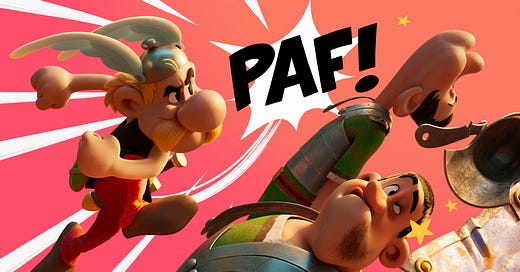


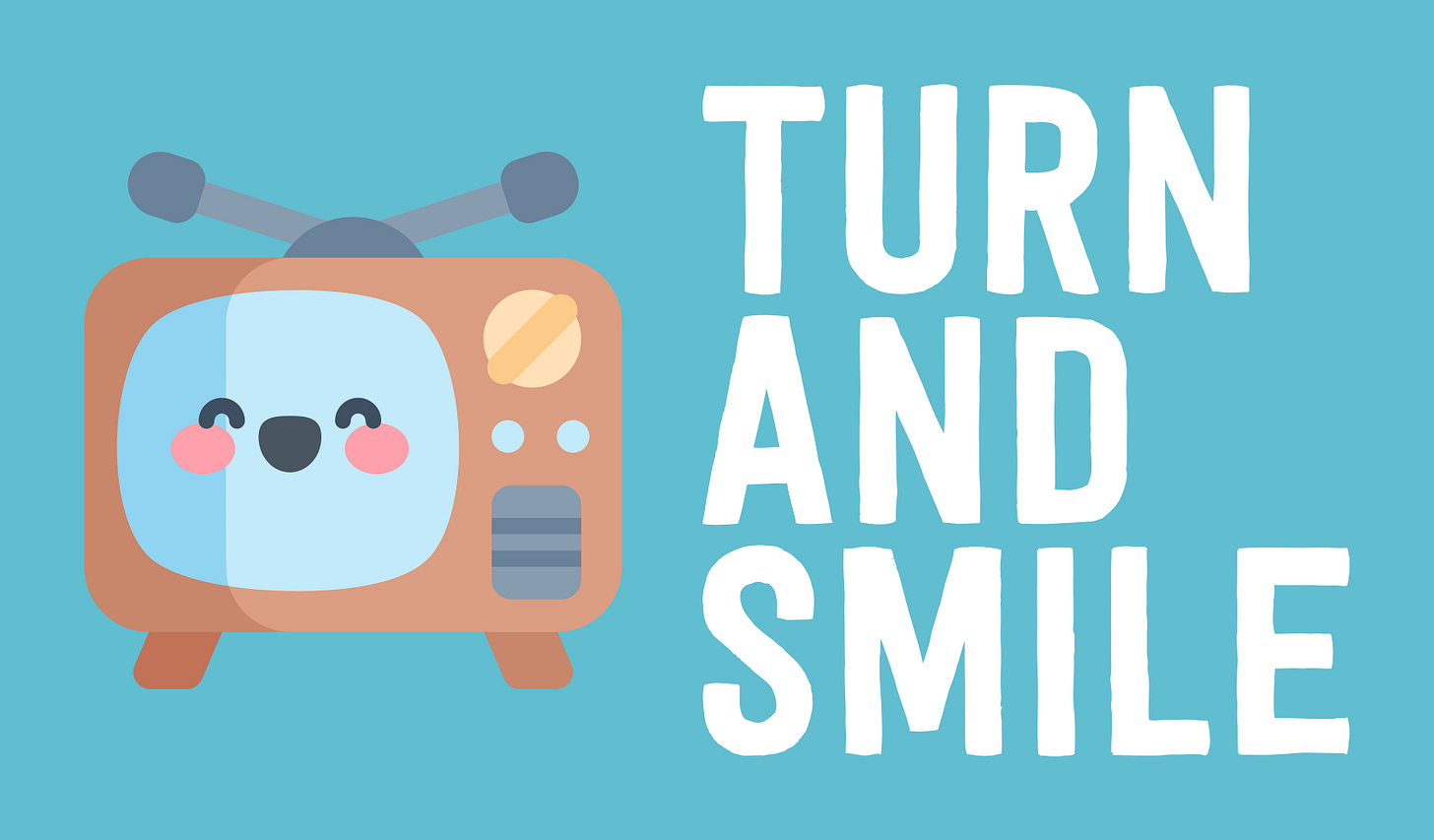
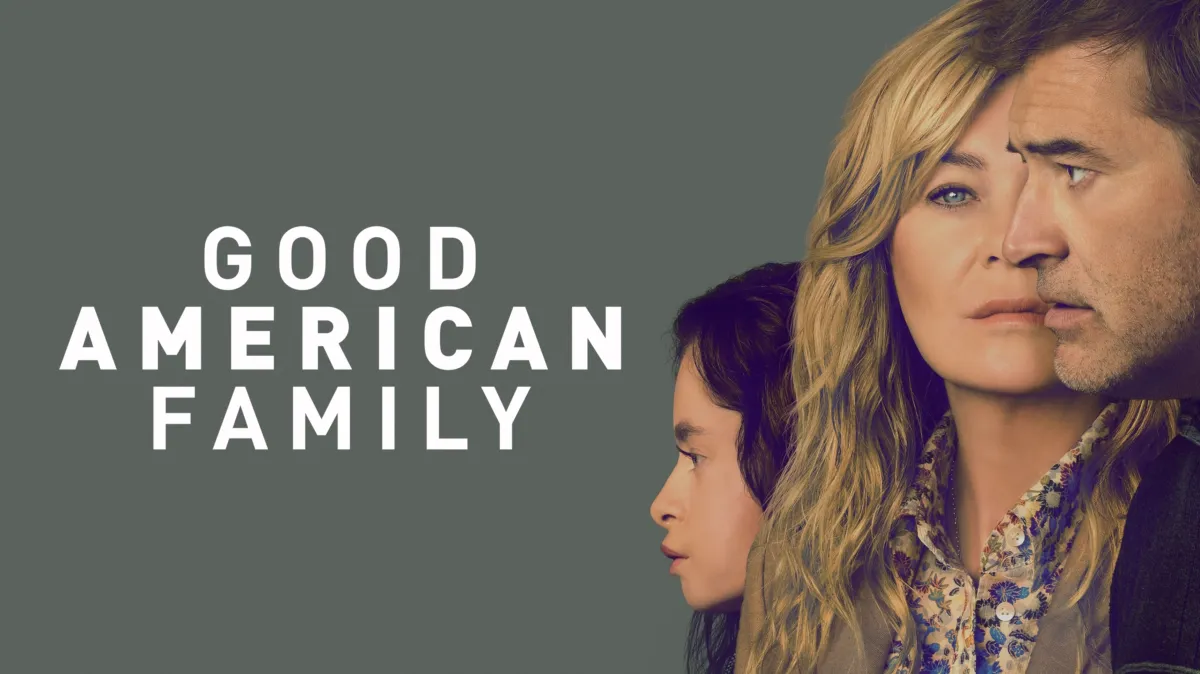


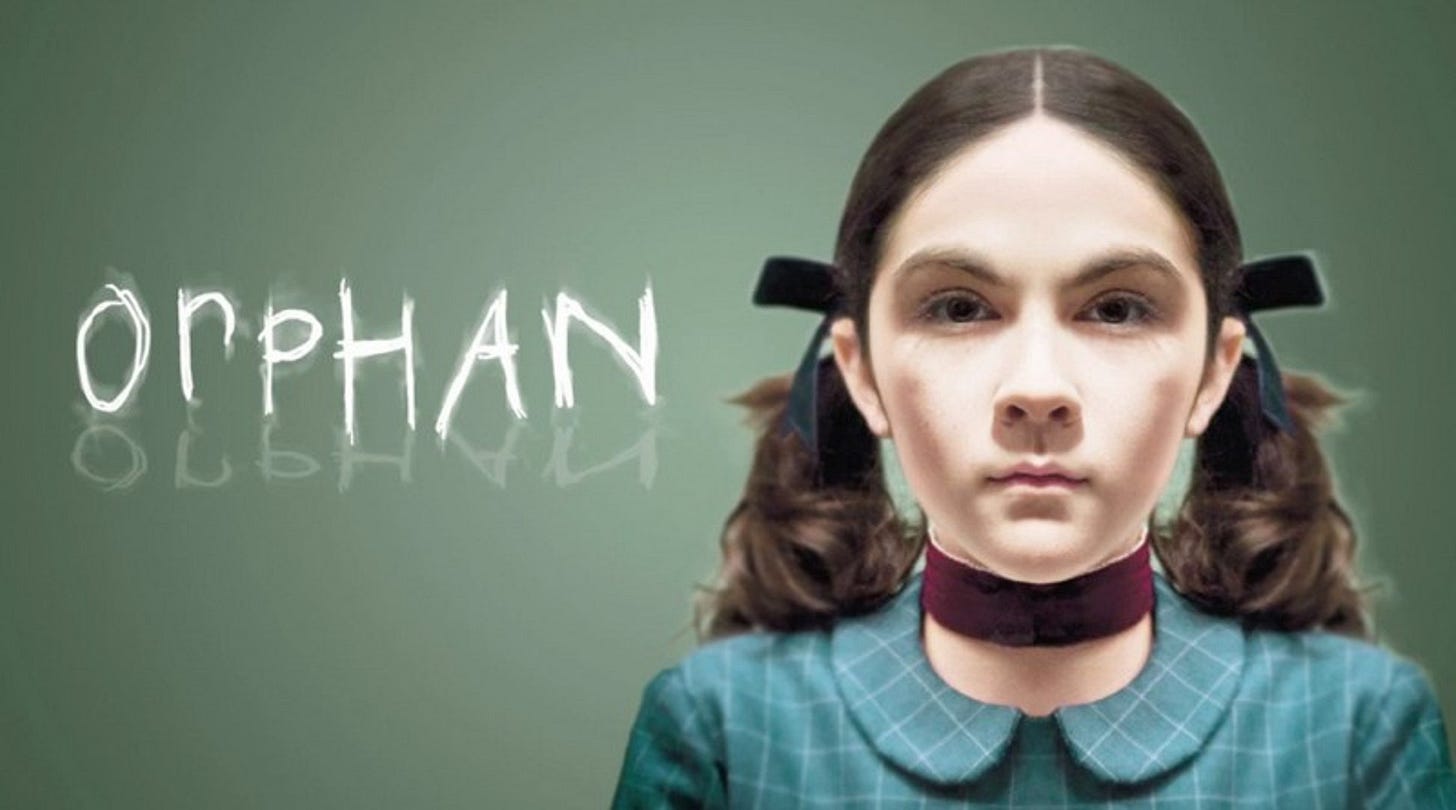

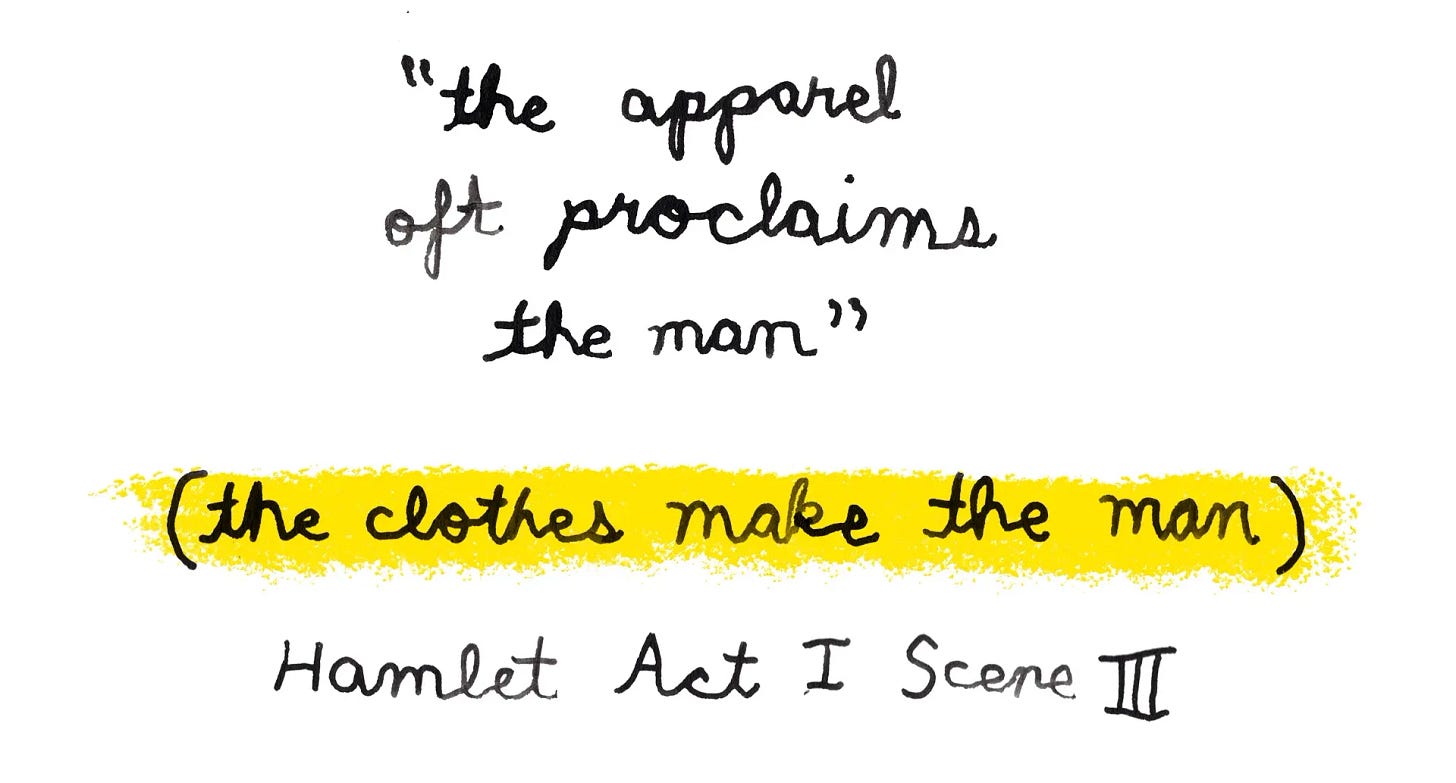
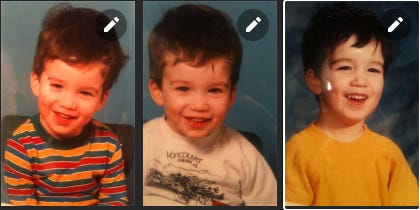
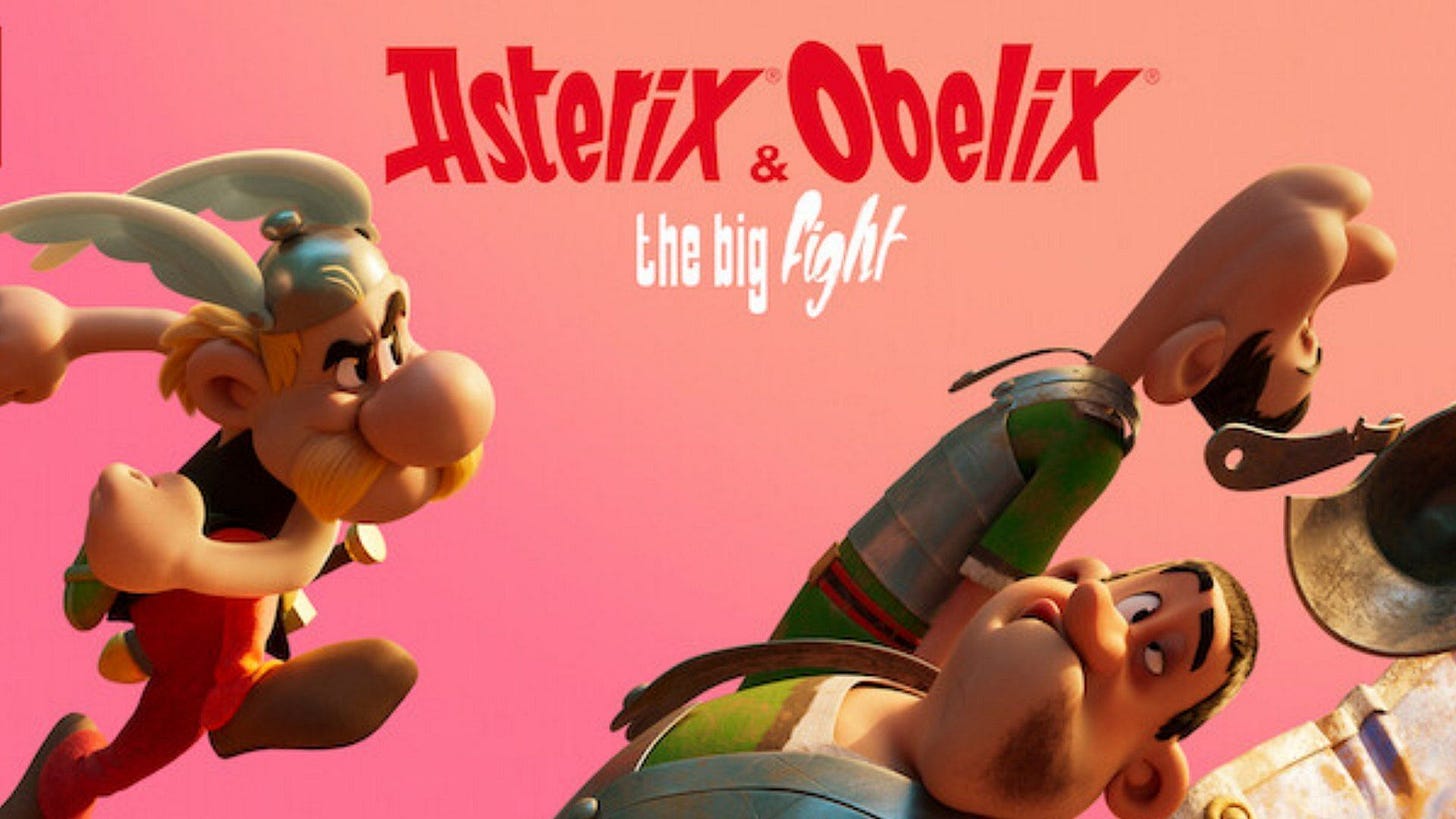


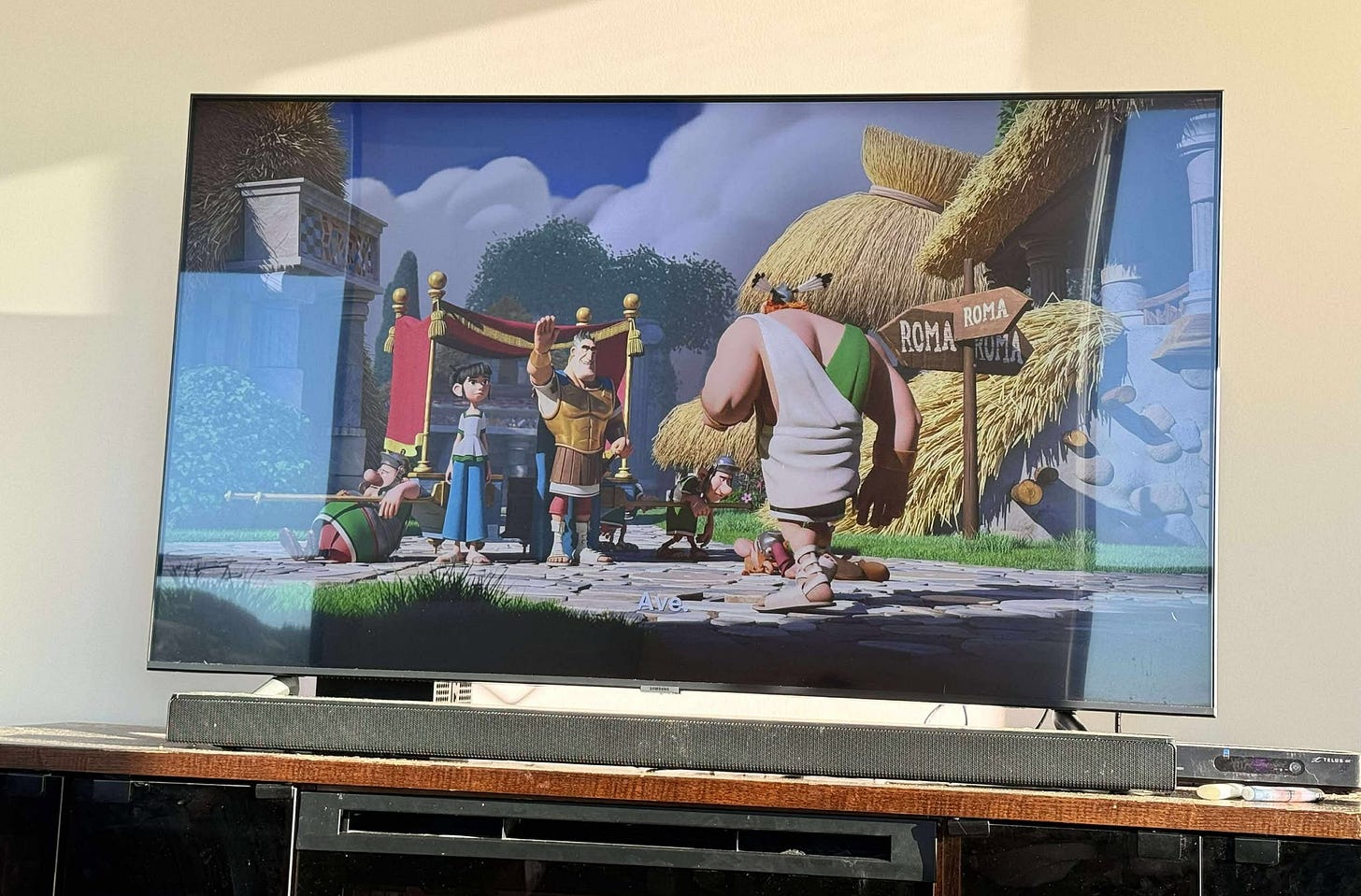

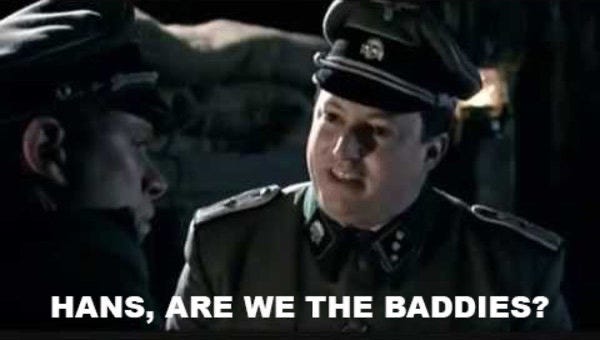
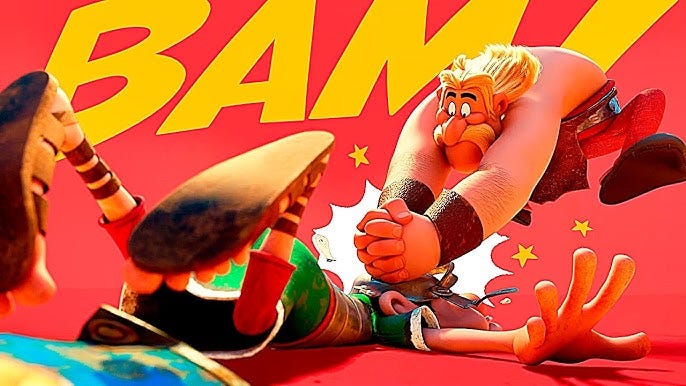
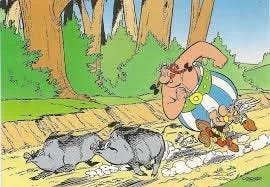

I grew up on Astérix and Obélix shows and movies so reading this was a great trip down memory lane.
I also love the redemption story for the hosts of wear what the f you want. Good for them to recognize their past approach wasn't the healthiest of approaches 😂. We really got traumatised by the fashion police in the 2000s
Do you have the Serializd tv show app? I’d love to follow you there